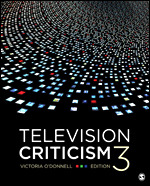PART I: ORIENTATION
Chapter 1: The Work of the Critic
Journalistic Television Criticism
Narrative and Contextual Reality
Critical Categories and Critical Choices
The Familiar and the Unfamiliar in Television
Chapter 2: Demystifying the Business of Television
The Impact of the Internet and the Role of Advertising, Schedules, and Ratings
The Strategies of Television Advertising
Product Promotion Within Television Programs
Scheduling and Advertising
The Production of a Television Show
PART II: FORMAL ASPECTS OF TELEVISION
Chapter 3: Production Techniques and Television Style
Length of Shot and Framing
Production on Film Versus Digital Video
Style, Reception, and Digital Video Practices
Camera Choice Follows Function
Television Sound and Editing
Chapter 4: Television, the Nation’s Storyteller
Storytelling and the Human Condition
Chapter 5: Television Genres
Television Genre, Production, and Scheduling
The Rules for Classifying Genres
Genre and Television Criticism
PART III: THEORETICAL APPROACHES TO TELEVISION CRITICISM
Chapter 6: Rhetoric and Culture
Chapter 7: Representation and Its Audience
Television Representation
Interpreting Representation
Reception of Televisual Images
Representation of the “Other”
Advice for Television Critics
Representation and Collective Memory
Chapter 8: Postmodernism
PART IV: CRITICAL APPLICATIONS
Chapter 9: Guidelines for Television Criticism
The Look of the Program and Its Codes
Writing Television Criticism
Chapter 10: Sample Criticism of a Television Program: The Big Bang Theory—Season 8, Episode 824, “The Commitment Determination”
Description of The Big Bang Theory
Description of the Episode
Analysis and Interpretation

